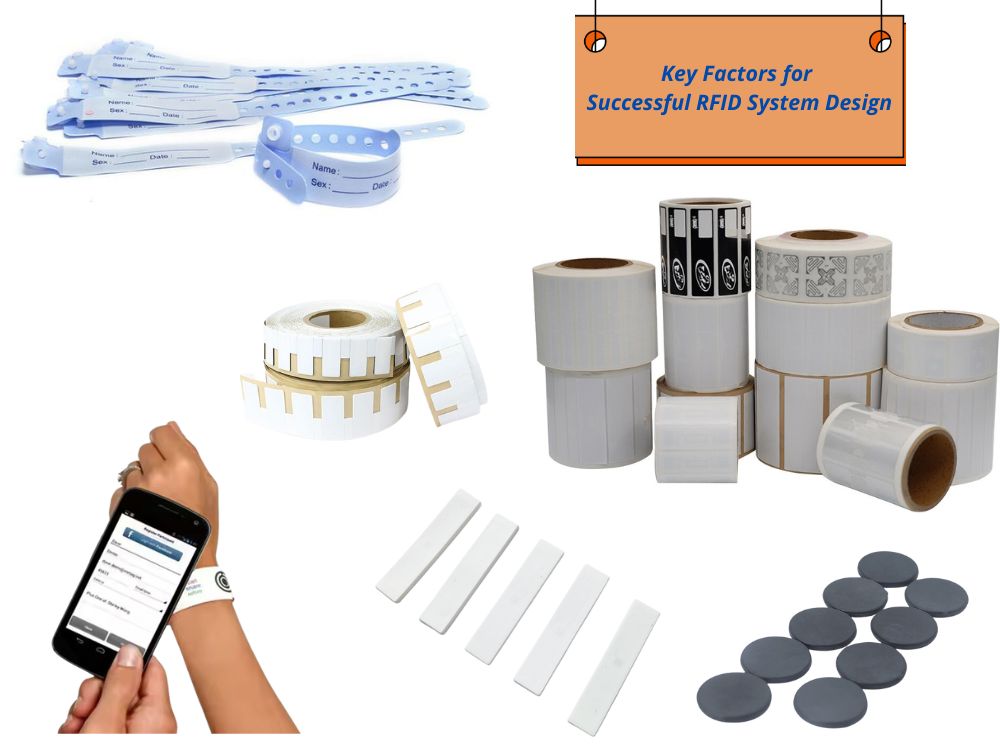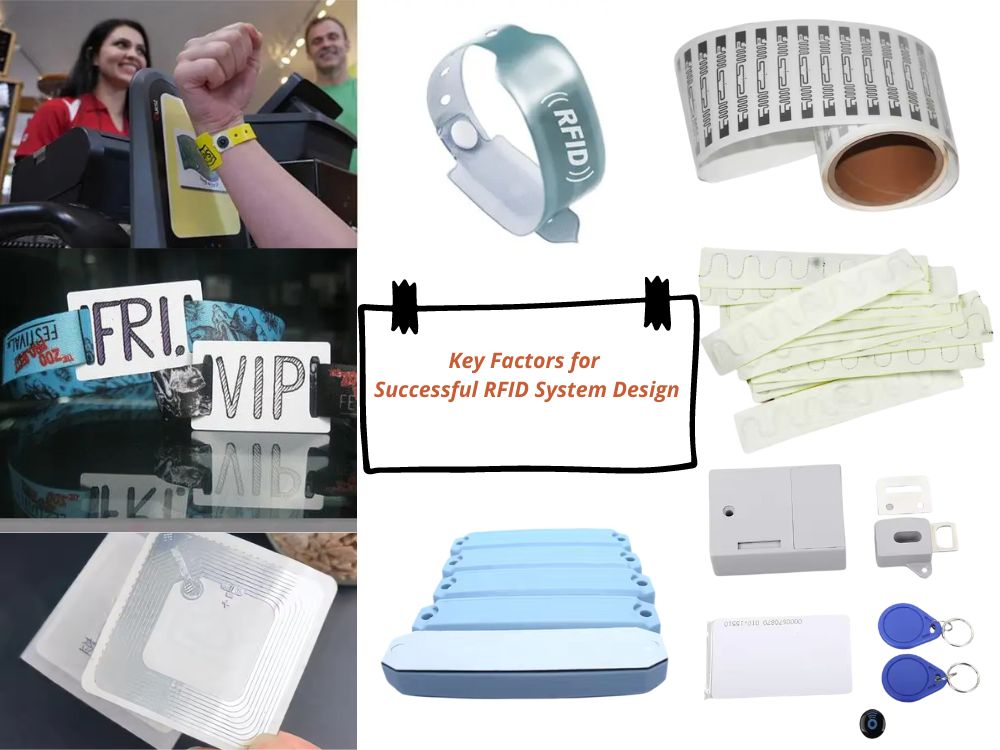
Key Factors for Successful RFID System Design
Table of Contents
Summary
However, to harness its full potential, careful consideration must be given to system design and implementation. The following article outlines critical factors for designing an effective RFID system, aiming to avoid common pitfalls and ensure successful deployment.

Overview of successful RFID System Design
RFID systems, while highly beneficial, can be complex to implement effectively. Successful RFID system design involves clear objectives, selecting the appropriate technology, and conducting rigorous testing. This article provides an in-depth look at seven crucial factors to consider, including objectives, technology choices, and integration strategies, to ensure a cost-effective and operationally successful RFID system.
Defining Objectives
Establishing clear objectives is fundamental to any RFID project. Without well-defined goals, assessing the success of the implementation can be challenging.
Key Considerations:
- Goal Clarity:Define what you want to achieve with the RFID system—whether it is improved asset tracking, reduced manual data entry, or enhanced inventory management.
- Benchmarking:Set benchmarks for success and review progress against these milestones to ensure the project meets its goals.
Assessing RFID Technology Suitability
RFID is one of many technologies available for identification and tracking. It is essential to determine if RFID is the most suitable option for your needs.
Key Considerations:
- Alternative Technologies:Compare RFID with other technologies such as barcodes and QR codes to ensure RFID is the best fit.
- Technology Scope:Understand the strengths and limitations of RFID relative to your specific application.
Selecting the Right RFID Technology
RFID technology encompasses various types and frequencies, each suited for different applications. Selecting the appropriate technology is crucial for system performance.
Types of RFID Technologies:
Type | Frequency Range | Typical Range | Power Source |
LF (Low Frequency) | 125 kHz – 134 kHz | Up to 10 cm | Passive |
HF (High Frequency) | 13.56 MHz | Up to 1 meter | Passive |
UHF (Ultra-High Frequency) | 860 MHz – 960 MHz | Up to 20 meters | Passive/Active |
Key Considerations:
- Frequency: Choose between LF, HF, and UHF based on the required read range and environmental conditions.
- Tag Type: Decide between passive (powered by the reader) and active (battery-powered) tags depending on range and performance needs.

Choosing the Right Brand and Products
Selecting the right brand and products is vital for reliable RFID system performance.
Key Considerations:
- Product Reliability:Opt for reputable brands, especially for applications requiring high durability.
- Application-Specific Needs:For specialized environments, such as high-vibration or extreme temperatures, choose products designed for those conditions.
Testing and Validation
Thorough testing is essential to ensure the RFID system performs as expected under real-world conditions.
Key Considerations:
- Real-World Testing:Simulate worst-case scenarios to test system robustness and performance.
- Long-Term Performance:Ensure that the system remains effective over time and that tags and readers withstand environmental stress.
Integration with Existing Systems
Effective integration with existing systems is crucial for seamless data management and operational efficiency.
Key Considerations:
- Integration Methodology:Determine how the RFID system will integrate with current databases and ERP systems.
- Data Exchange:Choose between batch transfers and real-time data updates based on system requirements.
Measuring Success
Evaluating the success of the RFID implementation involves more than just system functionality.
Key Considerations:
- Performance Metrics:Compare the results against initial objectives to assess the effectiveness of the RFID system.
- Continuous Improvement:Use insights from the implementation to refine and enhance the system further.
Conclusion
Designing and implementing an RFID system requires careful planning and consideration of multiple factors to achieve success. By defining clear objectives, selecting the right technology, and rigorously testing the system, businesses can ensure a cost-effective and efficient RFID solution. For detailed guidance and expert advice, engaging with RFID specialists can significantly enhance the likelihood of a successful deployment.
Comments
Hot Products

What Is RFID Waste Management
Imagine a city where every trash bin speaks — not literally — but through a tiny chip that tells the system when it’s full, when it’s emptied, and where it went. That’s what RFID waste management is doing today.

What are Bolt Seals and their Applications? | Complete Guide
In global trade and logistics, bolt seals play a crucial role in ensuring cargo security and compliance. These small but powerful devices are designed to lock shipping containers, trailers, and cargo doors with a tamper-evident mechanism.

What is an RFID Card Protector? Benefits, Use Cases, and Buying Guide
RFID technology (Radio Frequency Identification) is everywhere: in your credit cards, ID badges, transit passes, hotel room keys, and more. It offers speed and convenience, but it also opens the door to a new kind of digital theft called “skimming.” That’s where an RFID card protector comes in.

RFID Wristbands for Events: Bulk Buying Guide for Organizers
RFID wristbands for events are becoming the go-to solution for organizers who need faster entry, fraud prevention, and cashless payments at concerts, festivals, and sports venues. Unlike paper tickets or QR codes, these smart wristbands use embedded chips to streamline access, secure transactions, and improve the guest experience.

How RFID Tag on Windscreen Improves Vehicle Access Control and Toll Systems
In today’s fast-paced world, vehicle identification needs to be quick, secure, and contactless. An RFID Tag on the Windscreen provides exactly that — a reliable way to manage toll collection, parking, and gated access without stopping vehicles.

The Benefits of RFID Linen Tags in Commercial Laundry
Managing laundry in hospitals, hotels, or large laundry services is a big job. Each day, thousands of sheets, towels, and uniforms are washed, sorted, and sent back out. But problems like lost linens, sorting mistakes, and manual counting can cost companies a lot of money. For example, mid-sized hotels can lose over $200,000 each year from missing linens.
That’s where RFID Linen Tags come in.
Tags
RELATED BLOGS

What Is RFID Waste Management
Imagine a city where every trash bin speaks — not literally — but through a tiny chip that tells the system when it’s full, when it’s emptied, and where it went. That’s what RFID waste management is doing today.

What are Bolt Seals and their Applications? | Complete Guide
In global trade and logistics, bolt seals play a crucial role in ensuring cargo security and compliance. These small but powerful devices are designed to lock shipping containers, trailers, and cargo doors with a tamper-evident mechanism.

What is an RFID Card Protector? Benefits, Use Cases, and Buying Guide
RFID technology (Radio Frequency Identification) is everywhere: in your credit cards, ID badges, transit passes, hotel room keys, and more. It offers speed and convenience, but it also opens the door to a new kind of digital theft called “skimming.” That’s where an RFID card protector comes in.




